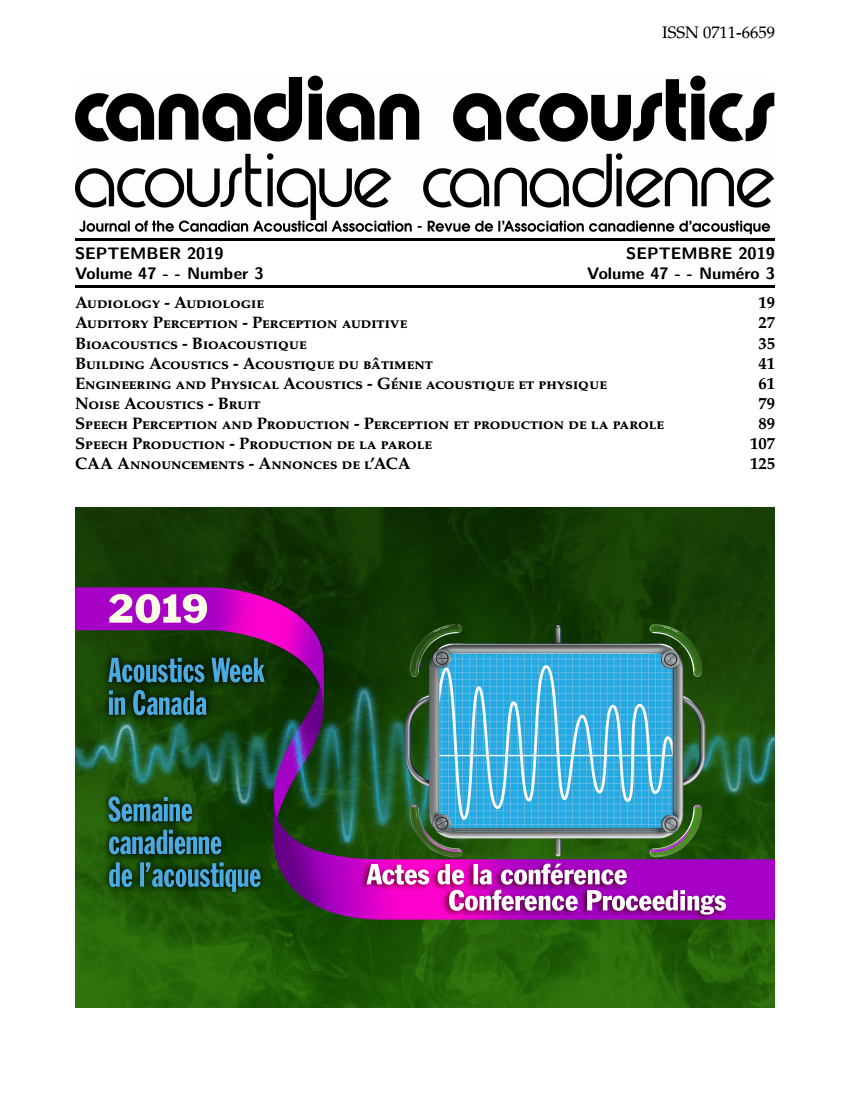Features of Male- and Female-Produced Song in Black-Capped Chickadees (Poecile Atricapillus) Change Between Seasons
Abstract
Black-capped chickadees (Poecile atricapillus) are small, non-migratory songbirds that are commonly seen across much of North America. One of their primary vocalizations, the fee-bee song, has been well-documented in males and functions in both mate attraction and territory defense (Smith, 1991). Both of these functions are critical to fitness particularly in the spring during the breeding season, but less so during other times of the year. Use of this song by females has only recently been described and its function is not well understood (Hahn et al., 2013). In this experiment, we measured acoustic features related to frequency and duration of both male- and female-produced fee-bee songs that had been recorded at two times of the year (e.g., spring and fall). We found that male songs showed less variation overall in their acoustic measures than female songs across both seasons. We also found that songs produced in the spring had less overall variation than those produced in the fall, regardless of sex of the producer. This suggests that fee-bee songs are more critical in the spring than fall, and also suggests that male song consistency may be more important than female song consistency. More research into the use and function of female song may elucidate these sex differences.Additional Files
Published
How to Cite
Issue
Section
License
Author Licensing Addendum
This Licensing Addendum ("Addendum") is entered into between the undersigned Author(s) and Canadian Acoustics journal published by the Canadian Acoustical Association (hereinafter referred to as the "Publisher"). The Author(s) and the Publisher agree as follows:
-
Retained Rights: The Author(s) retain(s) the following rights:
- The right to reproduce, distribute, and publicly display the Work on the Author's personal website or the website of the Author's institution.
- The right to use the Work in the Author's teaching activities and presentations.
- The right to include the Work in a compilation for the Author's personal use, not for sale.
-
Grant of License: The Author(s) grant(s) to the Publisher a worldwide exclusive license to publish, reproduce, distribute, and display the Work in Canadian Acoustics and any other formats and media deemed appropriate by the Publisher.
-
Attribution: The Publisher agrees to include proper attribution to the Author(s) in all publications and reproductions of the Work.
-
No Conflict: This Addendum is intended to be in harmony with, and not in conflict with, the terms and conditions of the original agreement entered into between the Author(s) and the Publisher.
-
Copyright Clause: Copyright on articles is held by the Author(s). The corresponding Author has the right to grant on behalf of all Authors and does grant on behalf of all Authors, a worldwide exclusive license to the Publisher and its licensees in perpetuity, in all forms, formats, and media (whether known now or created in the future), including but not limited to the rights to publish, reproduce, distribute, display, store, translate, create adaptations, reprints, include within collections, and create summaries, extracts, and/or abstracts of the Contribution.


